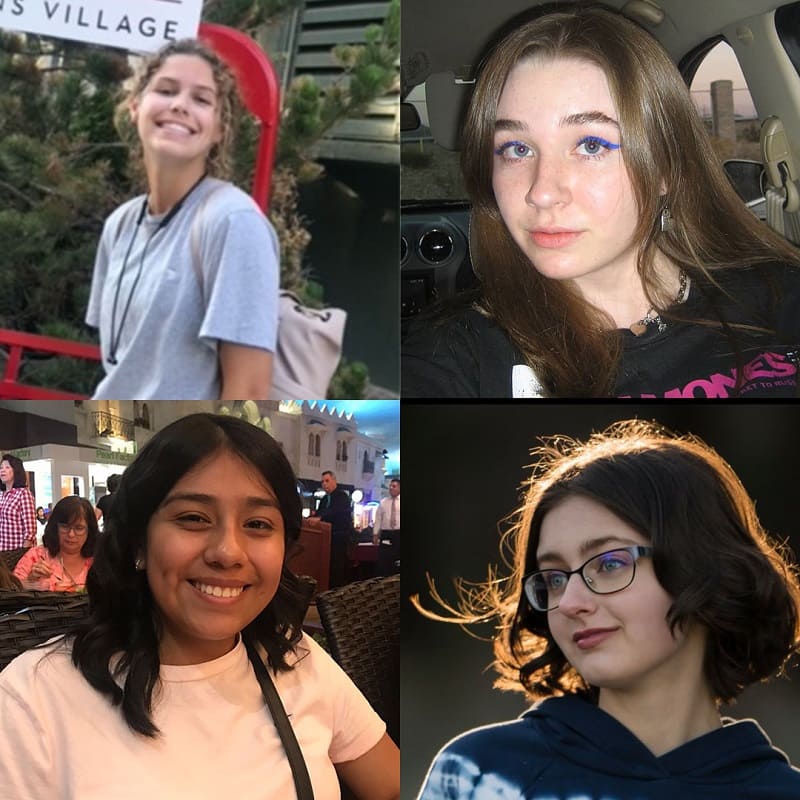Rosalind Franklin’s discovery of the double helix
A look at this pioneering scientist's life written by the freshmen Women in Science and Engineering (WiSE) LLC cohort on the topic of women in STEM

Born in London on July 25, 1920, chemist Rosalind Elsie Franklin was a woman of many talents, the most prominent of which was her talent for scientific discovery. From a young age, Franklin was encouraged by her parents to pursue her interest in science, to speak out about issues she considered important, and to persevere despite the opinions of her peers (Famous Scientists). This advice serve her well into her adult life as she went on to accomplish many feats as a Jewish woman in science. In 1938, after completing her studies at St. Paul’s School for Girls – a school that prepared young women to be career-ready rather than marriage-ready, Franklin set off to study physical chemistry at Newnham College, a women’s college within Cambridge University (NIH). Much of her work as an undergraduate was influenced by World War II. Many of her professors and mentors were obligated to do scientific work for the war. Many French war refugees accepted positions at the university, including Adrienne Weil, who eventually became Rosalind’s friend and mentor during such troubling times (NIH).
At the conclusion of her undergraduate work, Franklin had to decide whether to work as part of the war effort or pursue a Ph.D. in her specialty. She chose to pursue graduate training in chemistry. By the end of her graduate training, Franklin had earned a Ph.D. and published five research papers, all while living off an extremely small salary (Glynn 7). During her search for new work, Franklin got involved in the research occurring within Jacque Mering’s lab at the Laboratoire Central des Services Chimique de l'Etat, located in Paris. There she learned to analyze carbons using X-ray crystallography, a process also known as X-ray diffraction. In addition, to publishing twenty-one papers on carbon structures and nineteen papers on viruses, Franklin is most well known for her discovery of the double helix that makes up DNA and the five publications she authored with her student, R.G. Gosling, on DNA structure (NIH). Despite being a woman in a man’s world, Franklin persevered and was able to make massive historical breakthroughs with her work (Glynn 13).
Advances in x-ray crystallography that began with German physicist Max Von Laue’s discovery and tuse of x-ray diffraction in 1912 continued throughout Franklin’s graduate training and early career, and she mastered crystallography not only as a concept, but as a process; her experience using the machinery and interpreting the images that were produced would prove invaluable in her own research years in the future. While she was at Jacque Muring’s lab in Paris, she used crystallography to study the atomic structure of coal. Findings from Franklin’s coal research enabled people to produce and use coal more efficiently all across the world (Famous Scientists). Following her important findings about coal, she was asked to participate in a fellowship with Maurice Wilkins and John Randall, two researchers who were studying DNA proteins at King’s College in London (Uberoi). Wilkins obtained a clean sample of DNA, which was perfect for the study as it was free of variables that could make the image blurred or confusing (Famous Scientists). This was the sample that Franklin researched for the next three years.
It is important to note that a graduate student named Raymond Gosling had used a different sample of DNA roughly a year prior and already found out that it had a helical structure. Unlike Franklins however, his sample wasn’t singled out and the resulting pictures were too blurry to be able to definitively tell its shape (Famous Scientists). This uncertainty about the structure is where Rosalind Franklin came in to help — after skillfully taking pictures of DNA, utilizing the techniques she perfected in Muring’s lab, and studying the images, she made several crucial discoveries about DNA. She confirmed that it had a helical structure and was able to get a clear photo to prove it. She also realized that there is a significant difference in DNA’s structure when the sample is exposed to moisture in contrast to when it is dried out (Famous Scientists; Gibbons). Franklin was particularly curious about why this was, so she paused her research on the structure of DNA and began to figure out why there was a difference when DNA was in different environments. She also took this time to double-check her own findings to make sure they were perfect. While in this process, Wilkins sent her images to two scientists, James Watson and Francis Crick, without her knowledge or permission (Gibbons). The two had been trying to make models of DNA for a while but didn’t have any reference for it. Now with the pictures, they jumped at the opportunity and began to discover many of the things about DNA’s structure that we know today (Famous Scientists). After building their model, they published a paper about it without giving credit to Franklin for her very crucial contributions to their findings (Famous Scientists, Gibbons).
Despite this theft of her intellectual property and the failure to recognize her contributions, Rosalind Franklin's discovery of the structure of DNA remains vitally relevant to this day; not only is her signature double-helix model sketched by every second grader in America, but her work has proved to be the fundamental foundation for virtually all modern genetic, microbiological, and biochemical research. It is by elaborating on her research that modern scientists working in this field have been able to accomplish what they have. Recently, scientists have discovered a new DNA structure within human cells. Described as a “twisted knot”, this variant structure occurs naturally within the human genome and had previously only ever been observed in vitro (Dockrill). In the fall of 2018, however, scientists were able to identify the structure in living cells as well and have since been researching what complex biological systems would require a unique structure to encode. One scientist involved was quoted saying how, "When most of us think of DNA, we think of the double helix... This new research reminds us that totally different DNA structures exist – and could well be important for our cells." This makes clear that Franklin's work in discovering the structure of DNA is invaluable and serves as an foundation for all other work with DNA.
A review of Rosalind Franklin’s professional accomplishments makes clear that she was a master chemist, invaluable even in her own time for the work she did with coal in World War II. Through her work with DNA, she can be considered to have changed life science forever. A glimpse into the more personal aspects of Franklin’s life reveals that she had a zest for living, hunger for knowledge, and a commitment to doing good for all humanity that go beyond her 37 lived years. This is captured best by a quote from Franklin in which she proclaims that “science and everyday life cannot and should not be separated. Science, for me, gives a partial explanation of life. In so far as it goes, it is based on fact, experience and experiment.”
Works cited
The Doc. “Rosalind Franklin.” Famous Scientists. Accessed 04 November 2021.
Dockrill, Peter. “Scientists Have Confirmed a New DNA Structure Inside Human Cells.” ScienceAlert, 3 November 2018. Accessed 8 November 2021.
Gibbons, Michelle G. “Reassessing Discovery: Rosalind Franklin, Scientific Visualization, and the Structure of DNA.” Chicago Journals, June 2011. Accessed 3 November 2021.
Girolami, Gregory S. X-ray crystallography. University Science Books, 1953. Accessed 10 November 2021.
Glynn, Jennifer. My Sister Rosalind Franklin. New York, Oxford University Press Inc., 2012.
Klug, A. “Rosalind Franklin and the Discovery of the Structure of DNA.” Nature, vol. 219, 1968, 808-810, 843-844. Nature. Accessed 04 November 2021.
“Max von Laue - Facts - NobelPrize.org.” Nobel Prize. Accessed 10 November 2021.
NIH. “Rosalind Franklin.” U.S. National Library of Medicine, NIH. Accessed 04 November 2021.
Smith, Ms, and JH Martin. “x Ray crystallography.” NCBI, Feburary 2000. Accessed 09 November 2021.
Uberoi C. “Rosalind Franklin: The Woman Scientist of DNA.” Resonance, Springer India, March 2004. Accessed 1 November 2021.













